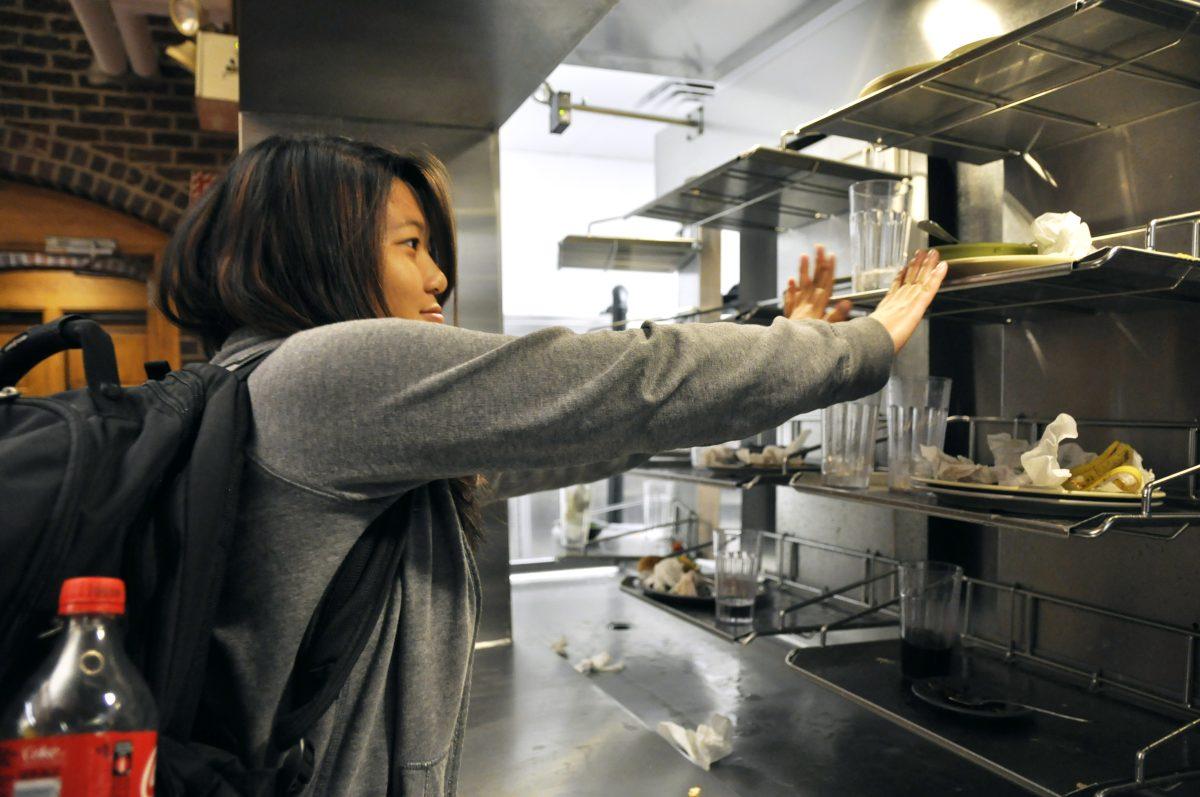
Joseph Phillips
Freshman computer science engineer Caroline Law slides dirty dishes on Fountain Dinning Hall's new tray disposal system on Saturday, September 14, 2013. The new system has dramtically expedited the cleaning time for the kitichen staff. Photo by Joseph Phillips
Fountain Dining Hall introduced a dish washing system this year to save energy and provide a better experience for students.
The new system includes a machine, dubbed “the Accumulator,” which replaced the 30-year-old conveyor belt system previously used to collect dirty dishes from students as they left Fountain.
The new device has multiple levels of trays, which allows several students to discard their dishes at the same time instead of waiting in a long line, according to Keith Smith, director of board operations/sustainability for University Dining. The accumulator also eliminated the silverware bin.
“When redesigning the dining halls on campus, [University Dining] looked at new options to get dishes from the customer to where the dishwashers are,” Smith said. “The Accumulator is a different way to do that, and it allows the customer many more points to get their dishes in. Part of the process of making [Fountain] more user friendly for the customer.”
The accumulator also uses energy more efficiently, Smith said.
According to Smith, the previous conveyor-belt model used power and water continuously as it rotated, and the Accumulator only uses power when the tray racks are full. The dishwashers also only use water when the accumulator passes dishes to the washing room.
“Technology has changed in the way [the dish-washing system] uses water and heats it up,” Smith said. “The new system uses a lot less water compared to the previous 30-years-old machines. The new system also uses electrical heating instead of steam, which is more efficient.”
Smith also said the new system also includes an anaerobic digester that breaks down uneaten food in a more energy-efficient way.
“When dishes go to the other side of the dish washing counter, [dishwashers] put the food into a trough which goes down into a grinder, which puts it into the anaerobic digester,” Smith said. “Within a day, food is reduced to grayish water.”
Previously, solid food waste would be taken to a compost facility in Goldston, N.C., about an hour away. Now it can be processed on site.